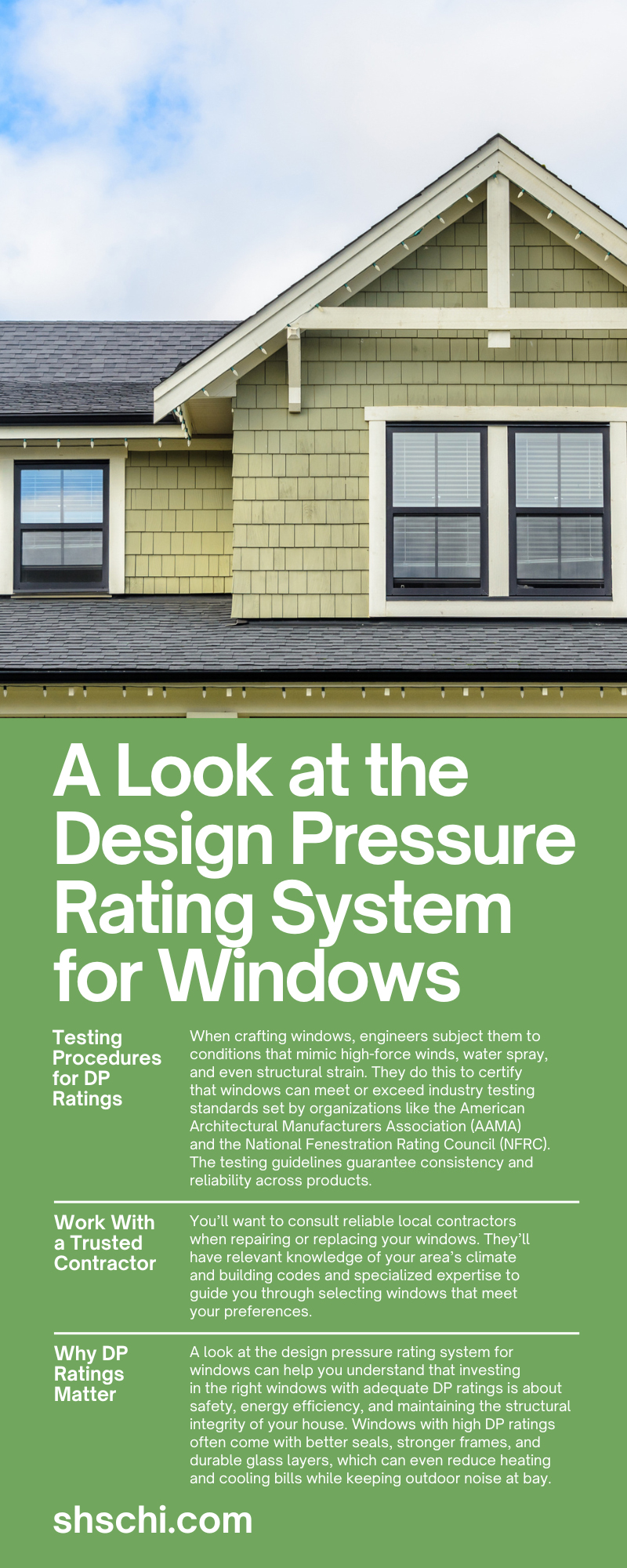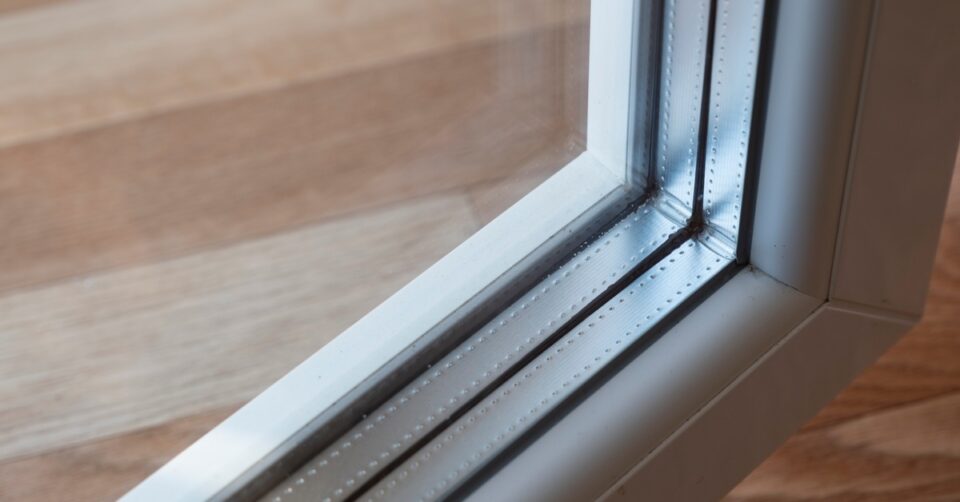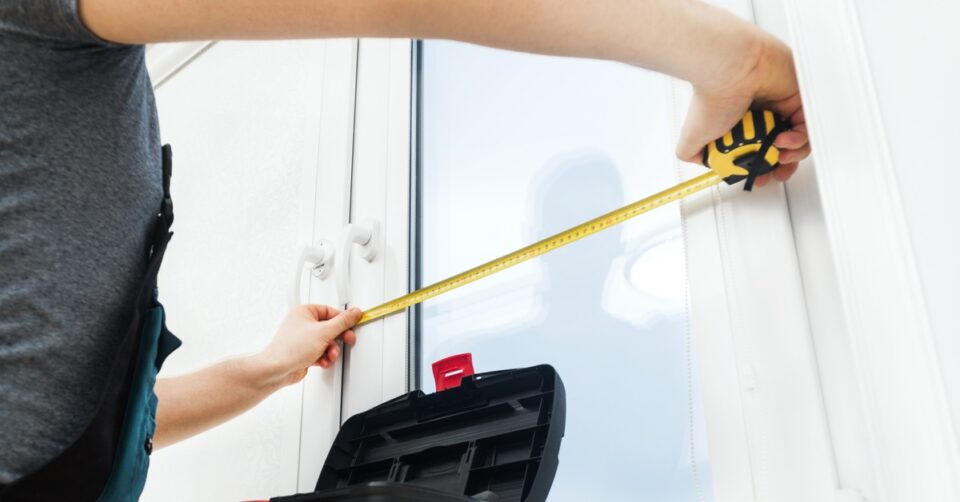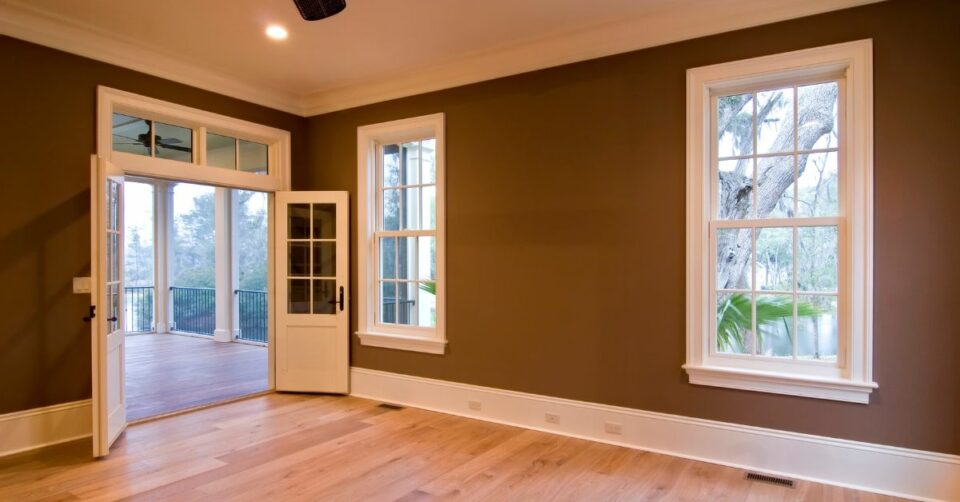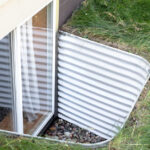
4 Reasons That Window Wells Are Important
February 3, 2025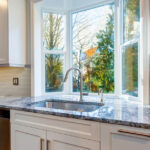
Are Garden Windows Right for Your House?
February 10, 2025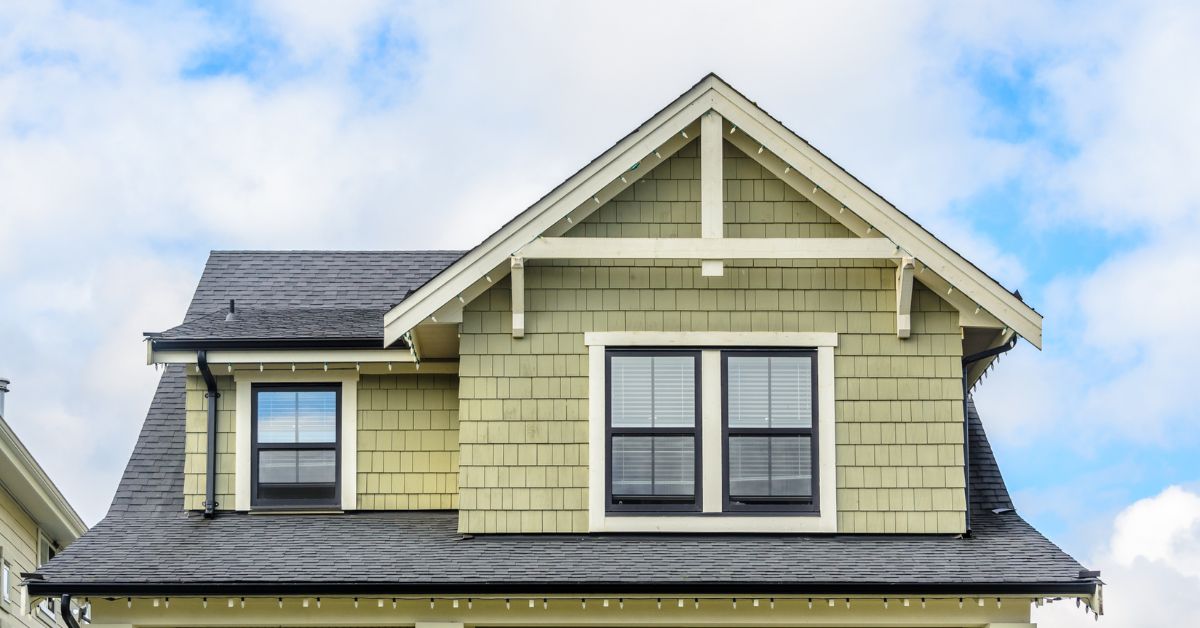
When the time comes to upgrade or replace your home’s windows, you may encounter technical jargon that isn’t familiar. If you frequently notice terms like “design pressure” or “DP rating” while browsing window products, you may wonder what they mean.
A closer look at the design pressure rating system for windows can help you learn the significance of this term and how it can influence your window installation and replacement. Explore the design pressure rating system in detail—what it measures, why it matters, and how to use it to make savvy choices when buying windows.
What Is the Design Pressure (DP) Rating System?
The design pressure (DP) rating system measures a window’s durability and resilience under challenging weather conditions. It assesses how well a window can withstand three specific forces:
- Wind pressure
- Water infiltration
- Structural load
Wind Resistance
While all aspects of the DP rating are essential, wind resistance may be the most vital and influential factor in the number printed on the window labels you see when shopping. It measures a window’s ability to stand up to high winds and pressure. When reading this number, the higher the DP number, the more resistant the window is to wind damage.
Water Penetration Resistance
A DP-rated window undergoes testing for its ability to prevent water from seeping into your home during heavy rain or storms. Even a substantially robust window can fail if it allows for water infiltration, which causes costly interior damage.
Structural Integrity
Another determinant of a window’s DP rating is whether its frame and overall construction can hold up under pressure over time, especially in extreme weather conditions. Measuring structural integrity is crucial because long-term durability should be prioritized alongside short-term performance.
By combining these three criteria, the DP rating gives you a well-rounded picture of how your window will perform in harsh conditions.
Testing Procedures for DP Ratings
When crafting windows, engineers subject them to conditions that mimic high-force winds, water spray, and even structural strain. They do this to certify that windows can meet or exceed industry testing standards set by organizations like the American Architectural Manufacturers Association (AAMA) and the National Fenestration Rating Council (NFRC). The testing guidelines guarantee consistency and reliability across products. Here are the key components of the testing process:
Wind Pressure Tests
Manufacturers place windows in a testing chamber where they apply air pressure that simulates high-force winds. The test ensures that the following window components remain intact:
- Frames
- Glass
- Seals
Water Resistance Tests
During tests, engineers may also spray water at the window from different angles while applying air pressure, mimicking rainfall accompanied by high winds. The goal is to make sure no leaks occur.
Structural Load Tests
This step checks how well the window holds its shape under stress. It also evaluates if the components, such as hinges and locks, function correctly after enduring the pressure tests.
Once a window passes these tests, it receives certification for a specific DP rating. Homeowners can usually find this rating on the product label or specifications, expressed as a number, typically ranging from 15 to 70 or higher.
What DP Ratings Should Homeowners Look For?
The right DP rating for your windows depends on several factors, including where you live, your home’s exposure to the elements, and local building codes. Here’s how you can determine what suits your geographic location and climate best:
Evaluate Your Home’s Needs
Start by assessing the specific environmental challenges your home faces. Does your area experience strong winds, heavy rains, or frequent storms? Knowing your climate zone and potential risks will pinpoint the DP range you should aim for.
Windy Areas or Elevated Terrain
Homes on hills, open plains, or near large bodies of water typically experience higher wind exposure than homes shielded by trees and buildings. The recommendation for such areas is a DP rating of at least 30.
Moderate Conditions
If you’re in a region with mild weather and occasional storms, a DP rating of 20–30 should suffice for your windows.
Building Codes and Local Requirements
Building codes vary from state to state and even from one municipality to another. Be sure to check with local authorities or your contractor to guarantee your new windows meet the required standards.
Choose High-Quality Materials
The materials used in windows also impact their DP rating. While vinyl, aluminum, and fiberglass are all popular frame options, each has different performance capabilities. Vinyl is durable and more affordable by comparison, whereas fiberglass offers high structural integrity and can withstand significant wind pressure.
Check for Certifications
High-quality materials will likely have certification from NFRC or AAMA, meet industry standards, and come with verified performance ratings for DP, energy efficiency, and structural integrity. Choosing certified windows ensures you’re getting tested and reliable systems.
Work With a Trusted Contractor
You’ll want to consult reliable local contractors when repairing or replacing your windows. They’ll have relevant knowledge of your area’s climate and building codes and specialized expertise to guide you through selecting windows that meet your preferences.
For homeowners in Chicago and the surrounding areas, this means turning to a local Chicago window replacement company such as Scientific Home Services. This team of manufacturers knows the climate and expertly and safely crafts and installs durable windows that can handle the winds that homeowners and residents encounter in the Windy City. The dedicated technicians at this company have years of experience utilizing heavy-duty tools and robust materials to craft and install efficient windows with high DP ratings of all sizes for all home types.
Why DP Ratings Matter
A look at the design pressure rating system for windows can help you understand that investing in the right windows with adequate DP ratings is about safety, energy efficiency, and maintaining the structural integrity of your house. Windows with high DP ratings often come with better seals, stronger frames, and durable glass layers, which can even reduce heating and cooling bills while keeping outdoor noise at bay.
Choosing windows for your home involves more than just picking a style that matches your aesthetic. Understanding the design pressure rating system can make all the difference in making sure your home is protected against the elements for years to come. Always consult professionals if you have any doubts and weigh all factors—including climate, location, and budget—when deciding.
